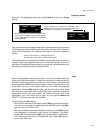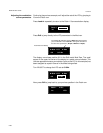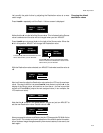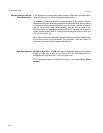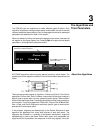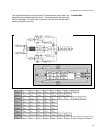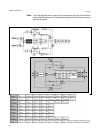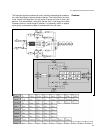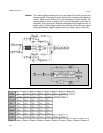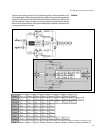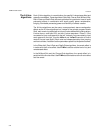
3-1
The Algorithms and Their Parameters
3
The Algorithms and
Their Parameters
There are two general classes of algorithm: 4-Voice and 6-Voice. The 4-Voice
algorithms: Concert Hall, Plate, Chamber, Inverse and Infinite each combine a
specific type of reverb with a 4-voice, general purpose stereo "effect toolbox"
which we call the Reverb Shell. These algorithms also provide "post-processing"
for the reverb. The 6-Voice algorithms: Glide>Hall, Chorus+Rvb, M-Band+Rvb,
Res 1>Plate, and Res 2>Plate each combine a specific type of reverb with a
specialized 6-voice stereo effect.
In this chapter, diagrams and descriptions of the Reverb Shell,and of each
algorithm are presented first, along with pictures of each edit matrix. The
diagrams are followed by a glossary of parameter descriptions, organized
alphabetically by matrix row name. Within each matrix row, parameters are
organized as far as possible in the sequence in which they appear in the row.
All PCM 80 algorithms share the same general structure, shown below. The
shaded area of the diagram is detailed in the individual effect descriptions that
follow.
About the Algorithms
The PCM 80 uses ten algorithms to create different types of effects. Each
algorithm includes an uncompromised stereo reverb effect, as well as several
voices of additional stereo effects. Each of these algorithms and its associated
parameters are described in detail in this section.
When you select any effect, the name of the algorithm from which it was derived
will appear on the upper display line. Pressing Edit will display the last edited
parameter in that algorithm's parameter matrix.
The algorithm name appears on the upper line of the display
whenever an effect is selected.
Chorus +Rvb
Press Edit to access the
parameter matrix.
P0 0.0 Prime Blue



